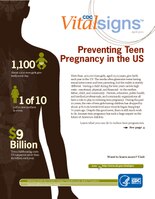
Photo from wikipedia
Background Approximately 20.5 million infants were born weighing 24 months) (aOR = 0.60 (95% CI = 0.39, 0.92)) had lower odds of delivering a LBW infant Mothers with severe household… Click to show full abstract
Background Approximately 20.5 million infants were born weighing <2500 g (defined as low birthweight or LBW) in 2015, primarily in low- and middle-income countries (LMICs). Infants born LBW, including those born preterm (<37 weeks gestation), are at increased risk for numerous consequences, including neonatal mortality and morbidity as well as suboptimal health and nutritional status later in life. The objective of this study was to identify predictors of LBW and preterm birth among infants in rural Uganda. Methods Data were derived from a prospective birth cohort study conducted from 2014–2016 in 12 districts across northern and southwestern Uganda. Birth weights were measured in triplicate to the nearest 0.1 kg by trained enumerators within 72 hours of delivery. Gestational age was calculated from the first day of last menstrual period (LMP). Associations between household, maternal, and infant characteristics and birth outcomes (LBW and preterm birth) were assessed using bivariate and multivariable logistic regression with stepwise, backward selection analyses. Results Among infants in the study, 4.3% were born LBW (143/3,337), and 19.4% were born preterm (744/3,841). In multivariable analysis, mothers who were taller (>150 cm) (adjusted Odds Ratio (aOR) = 0.42 (95% CI = 0.24, 0.72)), multigravida (aOR = 0.62 (95% CI = 0.39, 0.97)), or with adequate birth spacing (>24 months) (aOR = 0.60 (95% CI = 0.39, 0.92)) had lower odds of delivering a LBW infant Mothers with severe household food insecurity (aOR = 1.84 (95% CI = 1.22, 2.79)) or who tested positive for malaria during pregnancy (aOR = 2.06 (95% CI = 1.10, 3.85)) had higher odds of delivering a LBW infant. In addition, in multivariable analysis, mothers who resided in the Southwest (aOR = 0.64 (95% CI = 0.54, 0.76)), were ≥20 years old (aOR = 0.76 (95% CI = 0.61, 0.94)), with adequate birth spacing (aOR = 0.76 (95% CI = 0.63, 0.93)), or attended ≥4 antenatal care (ANC) visits (aOR = 0.56 (95% CI = 0.47, 0.67)) had lower odds of delivering a preterm infant; mothers who were neither married nor cohabitating (aOR = 1.42 (95% CI = 1.00, 2.00)) or delivered at home (aOR = 1.25 (95% CI = 1.04, 1.51)) had higher odds. Conclusions In rural Uganda, severe household food insecurity, adolescent pregnancy, inadequate birth spacing, malaria infection, suboptimal ANC attendance, and home delivery represent modifiable risk factors associated with higher rates of LBW and/or preterm birth. Future studies on interventions to address these risk factors may be warranted.
Journal Title: PLoS ONE
Year Published: 2020
Link to full text (if available)
Share on Social Media: Sign Up to like & get
recommendations!